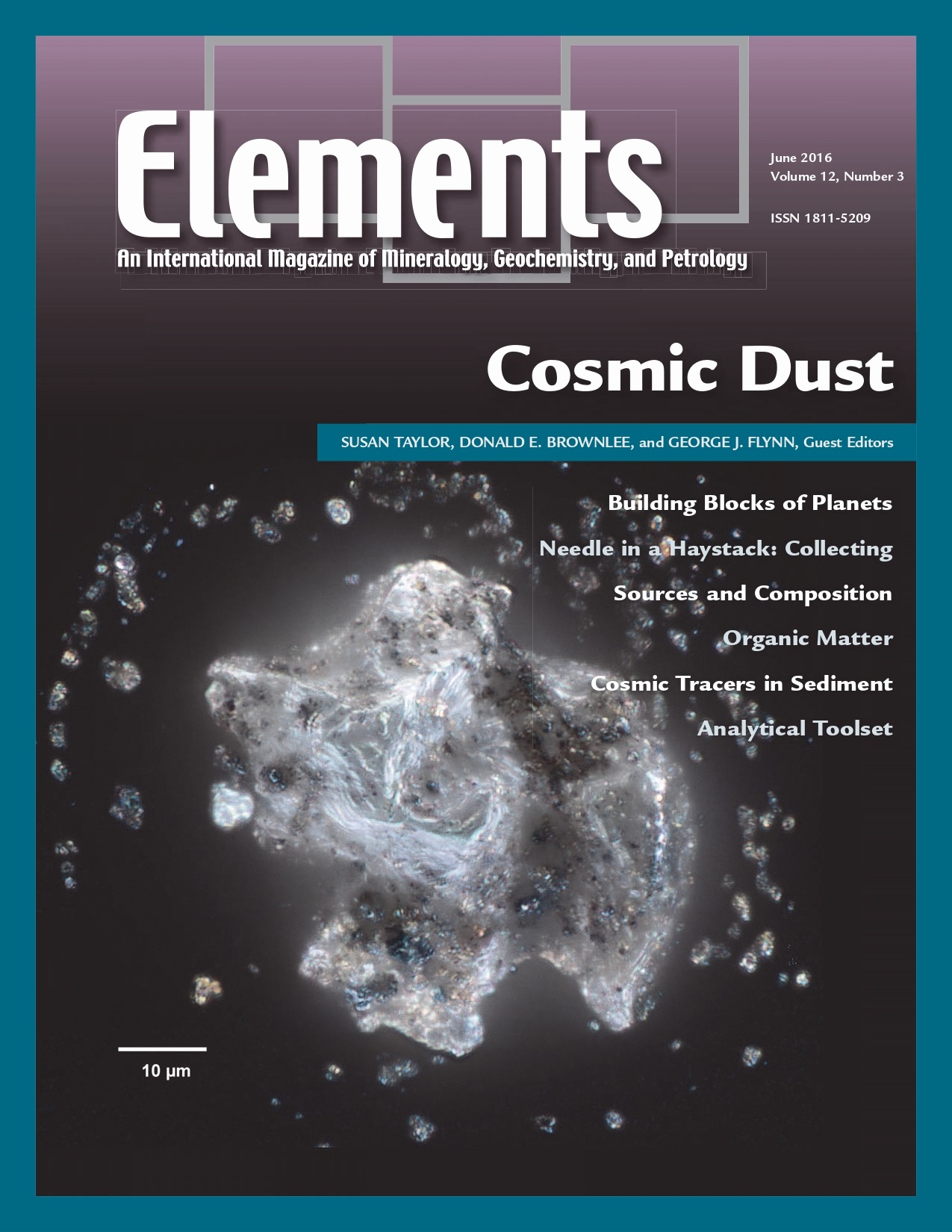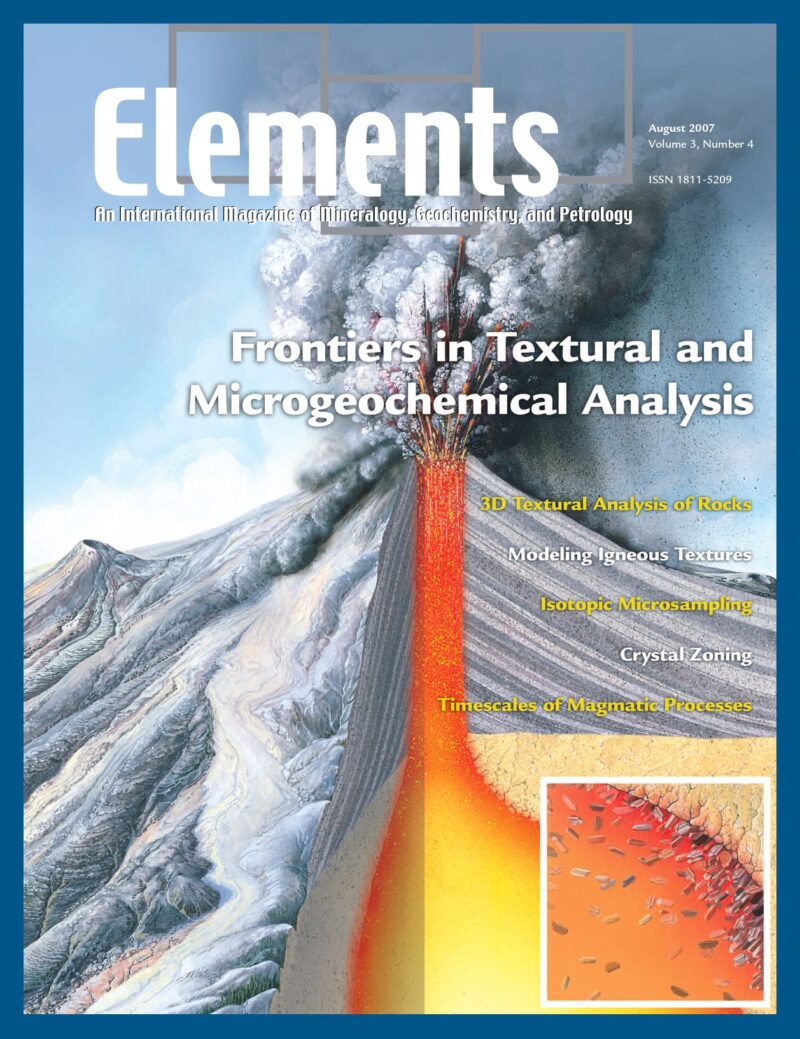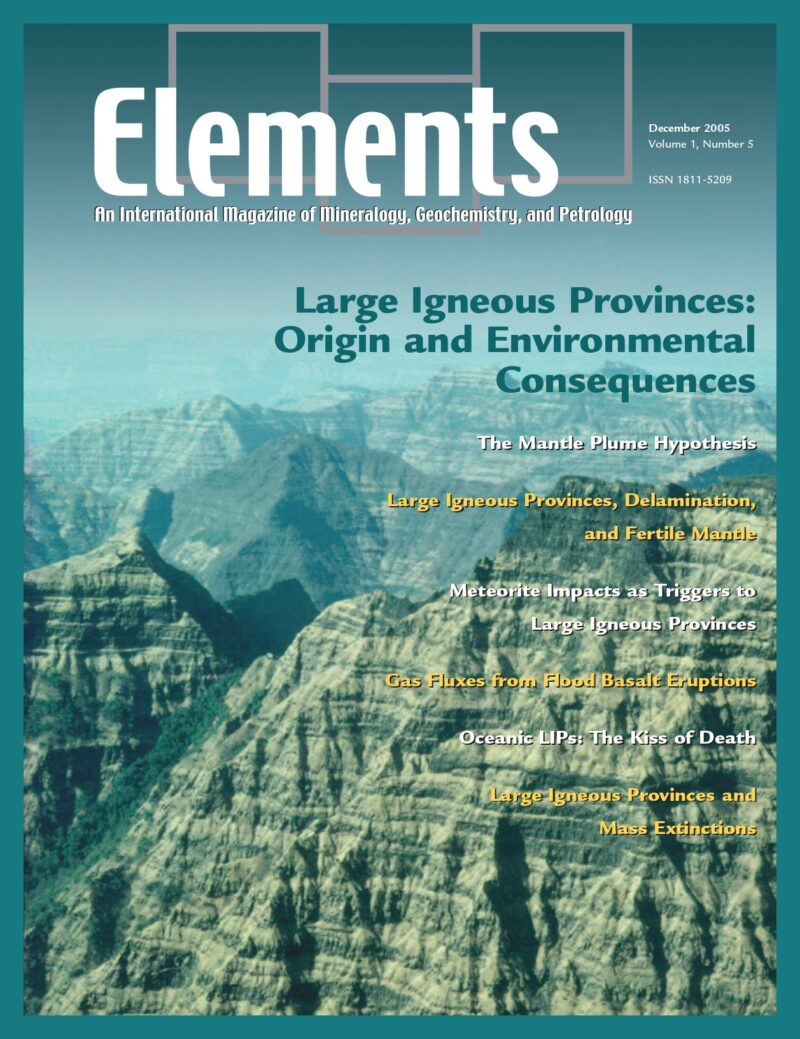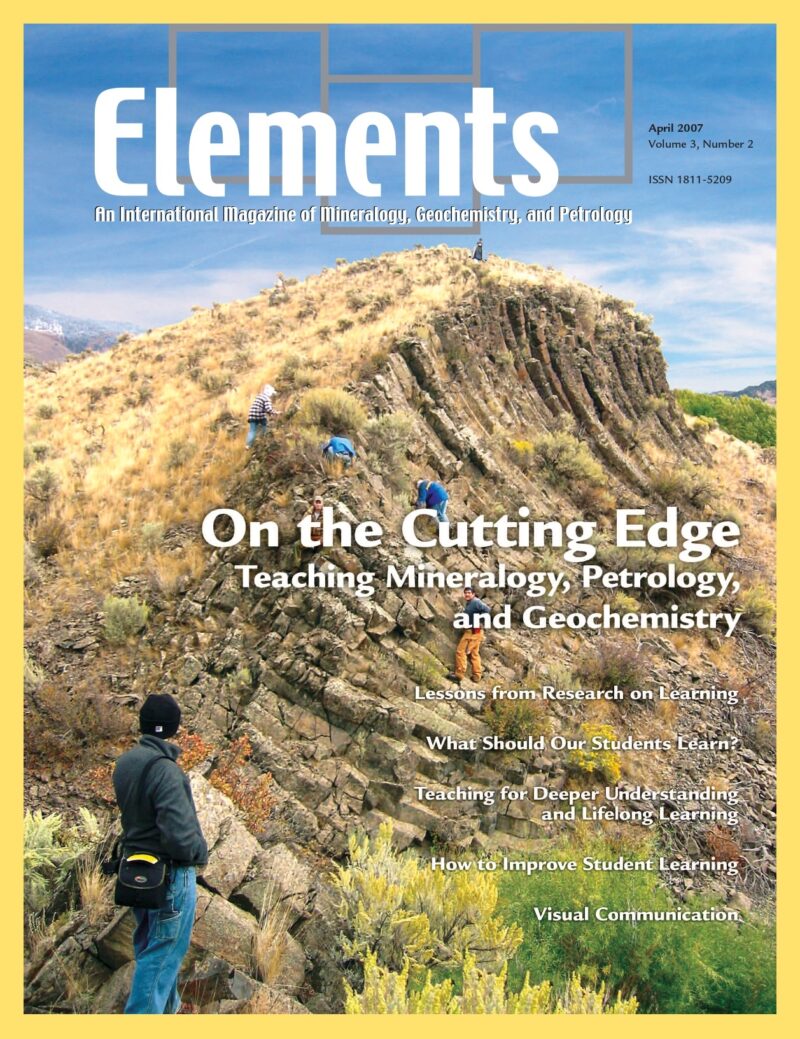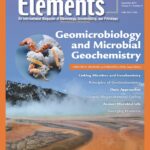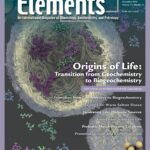Cosmic Dust, June 2016, Vol. 12, No. 3
$20.00
Cosmic dust is submillimeter debris shed by comets, asteroids, moons, and planets. In the Solar System, this dust scatters sunlight (the zodiacal light), and it is detected around other stars by its infrared emission.
Cosmic Dust
June 2016, Vol. 12, No. 3
Cosmic dust is submillimeter debris shed by comets, asteroids, moons, and planets. In the Solar System, this dust scatters sunlight (the zodiacal light), and it is detected around other stars by its infrared emission. Cosmic dust enters Earth’s atmosphere at high speeds and at a rate of 100 tons a day. These small particles are the largest source of extraterrestrial material accreting on the present-day Earth and include interplanetary dust particles and micrometeorites. Although atmospheric entry heating and terrestrial weathering have modified many, some particles are pristine primitive extraterrestrial materials that contain high abundances of isotopically anomalous presolar grains and primitive carbon compounds that have not been altered since their formation. Cosmic dust analysis provides invaluable information on initial planetary building materials.
Why You’ll Love Elements Magazine:
- Expert Contributors: Articles written by renowned researchers in the field of geoscience.
- Engaging Content: Join a community of readers who are passionate about Elements.
- Exceptional Quality: Each issue is printed on high-quality paper with stunning visuals and detailed illustrations that bring complex scientific concepts to life.
Order your copy of the June 2016 issue of Elements magazine today and discover cosmic dust.
Related products
-
Frontiers In Textural And Microgeochemical Analysis, August 2007, Vol. 3, No. 4
$20.00Recent advances have been made in high-resolution in situ methods to image mineral growth patterns, analyse compositional and isotopic zonation, and improve our ability to visualize, study, and model rock textures in three dimensions. These advances provide a significant step forward in the understanding of how rocks form and the history they can tell us.
-
Large Igneous Provinces: Origin And Environmental Consequences, December 2005, Vol. 1, No. 5
$20.00Large igneous provinces record major outpourings of igneous rocks, both on the continents and in ocean basins. Their origin is still vigorously disputed, with models invoking mantle plumes, thermal effects of the lithosphere, and meteorite impacts.
-
On The Cutting Edge: Teaching Mineralogy, Petrology, And Geochemistry, April 2007, Vol. 3, No. 2
$20.00New advances in research on learning have important implications for teaching mineralogy, petrology, and geochemistry. Effective instructional practices are increasingly student centered, address diverse student learning styles, and employ a variety of active-learning strategies.

